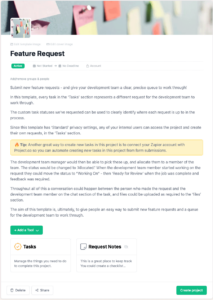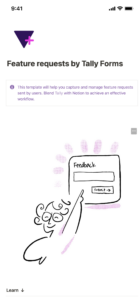Utilizing a prescribed format streamlines the intake, prioritization, and implementation of product improvements. It reduces ambiguity and ensures all necessary information is captured upfront, minimizing back-and-forth communication and potential misunderstandings. This ultimately leads to more efficient development cycles and better alignment between user needs and product evolution.
The following sections delve deeper into the core components of effective forms for requesting enhancements, offering practical guidance and best practices for creation and utilization.
Key Components of a Standardized Feature Request
Effective requests for product enhancements depend on conveying specific information clearly and concisely. The following components provide a framework for structuring these requests to maximize their impact and facilitate efficient processing.
1. Title/Summary: A brief, descriptive title encapsulating the essence of the proposed change. This serves as the initial point of contact and should quickly convey the request’s core purpose.
2. Description: A detailed explanation of the desired functionality, including its purpose, behavior, and expected outcome. This section provides the necessary context for understanding the request’s implications.
3. User Story/Use Case: A narrative depicting how a user would interact with the proposed feature in a real-world scenario. This helps clarify the value proposition and target audience.
4. Priority: An assessment of the request’s urgency and importance, often categorized as low, medium, or high. This aids in prioritization and resource allocation.
5. Target User/Persona: Identification of the specific user group or persona who would benefit from this feature. This information helps tailor the development and ensures alignment with user needs.
6. Benefits/Value Proposition: A clear articulation of the positive outcomes expected from implementing the feature, such as improved user experience, increased efficiency, or enhanced product functionality.
7. Technical Considerations (Optional): Any technical details, constraints, or dependencies that might influence the implementation process. This section provides valuable insights for development teams.
8. Attachments (Optional): Supporting documentation, such as mockups, wireframes, or user flow diagrams, can further clarify the proposed functionality and enhance understanding.
A comprehensive and well-structured feature request empowers development teams with the necessary information to effectively evaluate, prioritize, and implement product enhancements that deliver genuine value to users.
How to Create a Product Feature Request Template
Creating a standardized template ensures consistent and comprehensive information gathering for product enhancement proposals. This structured approach streamlines communication and facilitates efficient processing of feature requests.
1: Define Essential Fields: Begin by identifying the crucial information required to understand and evaluate feature requests. Essential fields typically include a title, detailed description, user story or use case, priority level, target user group, and expected benefits.
2: Structure for Clarity: Organize the template logically to facilitate clear and concise communication. Group related fields together and utilize headings and subheadings to improve readability.
3: Provide Guidance and Examples: Include clear instructions and examples for each field to ensure requesters understand how to provide the necessary information effectively. This reduces ambiguity and improves the quality of submissions.
4: Choose a Suitable Format: Select a format that aligns with organizational workflows and preferences. Options include online forms, spreadsheet templates, or dedicated software tools.
5: Establish a Submission Process: Define a clear process for submitting completed feature requests, including designated channels and responsible parties. This ensures requests are routed correctly and handled efficiently.
6: Regularly Review and Iterate: Periodically review the template and solicit feedback from users and stakeholders. This continuous improvement process ensures the template remains effective and aligned with evolving needs.
A well-designed template empowers stakeholders to articulate their needs effectively, providing development teams with the necessary information to make informed decisions and deliver valuable product enhancements.
Standardized forms for requesting product features offer a structured approach to managing product evolution. These templates ensure consistent information gathering, streamline communication between stakeholders and development teams, and facilitate informed decision-making regarding product enhancements. Key components such as clear descriptions, user stories, and defined benefits empower effective prioritization and efficient resource allocation. A well-defined submission process and regular template review further contribute to a streamlined and effective product development lifecycle.
Effective product development relies on clear communication and a structured approach to managing change. Leveraging standardized templates for feature requests is a critical step toward achieving this goal, enabling organizations to respond effectively to user needs and deliver products that meet evolving market demands. Continuous refinement of these processes and a commitment to clear communication are essential for sustained product success.


